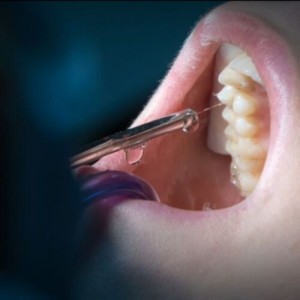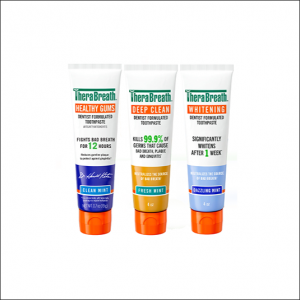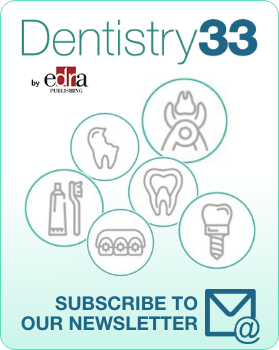
Wear in CAD-CAM resin ceramic materials: A review of the current state
Lorenzo Breschi
Introduction
Today, the use of computer-aided design and computer-aided manufacturing (CAD-CAM) systems is increasingly widespread. In the last few years resin-ceramic materials have been developed in order to meet the requirements of minimally invasive dentistry, including the resin nanoceramic (RNC) and polymer-infiltrated ceramic network (PICN).
Despite that, none of the currently available materials exhibit perfect intraoral stability over time. Regarding the wear resistance, it is strictly related to the characteristics of the ceramic embedded in the matrix. The wear process varies with the etiology (attrition, abrasion, or erosion) but always leads to material loss and topographic changes in the material. However, high hardness and low roughness can improve the resistance of the material to wear. Hybrid materials, such as resin-ceramic, with excellent esthetics, high hardness, and good wear resistance, appear to meet the clinical requirements and indications of those of lithium disilicate reinforced glass-ceramics.
Recently, Laborie et al. conducted a systematic review to compare the wear resistance of resin-ceramic materials (RNC and PICN), in vitro and in vivo, with other resin-ceramic materials and lithium disilicate (LiSi) reinforced ceramics.
Materials and methods
Researchers conducted a systematic review by following the preferred reporting item for systematic reviews and meta-analyses (PRISMA) guidelines. The team used PubMed, Scopus and DOSS search engines to identify articles published between 2013 and 2021. Two independent researchers conducted the review process by following PRISMA guidelines and by following a combination of keywords. Researchers considered laboratory and clinical studies in English and French languages evaluating the wear resistance of CAD/CAM manufactured RNC, PICN and LiSi ceramic.
Results
Of the 195 titles obtained from the initial search, only 35 articles were considered eligible. After comprehensive review of the articles, the research team included 23, with three additional articles retrieved from the reference section. Of these, 25 were in vitro studies and only one was a clinical trial. Fifteen studies compared resin-ceramic materials with each other, while 11 compared resin-ceramic materials with LiSi ceramics.
Two types of wear were used to compare the materials: attrition and abrasion. The most studied materials were two RNCs (Lava Ultimate and Cerasmart), one PICN (Vita Enamic) and one ceramic (IPS e.max CAD). Among the resin-ceramic materials, the PICN (Vita Enamic) showed less wear than the RNCs. Of the RNCs, Cerasmart had less attrition wear and less wear of the opposing teeth.
Conclusions
What emerged from this review is that LiSi glass-ceramics have higher wear resistance than resin-ceramic materials, with CAD-CAM resin-ceramic materials exhibiting different wear resistance properties from each other. Furthermore, LiSi glass-ceramics cause more wear of the opposing teeth.
Marion Laborie, Adrien Naveau and Aude Menard. “CAD-CAM resin-ceramic material wear: A systematic review.” J Prosthet Dent. 2022 Apr 19: S0022-3913(22)00076-2. doi: 10.1016/j.prosdent.2022.01.027. Epub ahead of print. PMID: 35459543.
 Related articles
Related articles
Digital Dentistry 11 June 2023
Dental erosion and ultrathin CAD-CAM glass-ceramic and composite resin occlusal veneers
By Lorenzo Breschi and Diego D’Urso
Thanks to modern technology, an alternative to traditional onlays and complete coverage crowns for dental erosion exists in ultrathin bonded posterior occlusal veneers.
Digital Dentistry 02 April 2023
A digital workflow for perio analysis and crown lengthening: a case report
By Lorenzo Breschi and Diego D’Urso
Coachman et al. have presented a case report of surgical crown lengthening in an esthetic region to describe how a digital workflow can improve diagnosis, treatment outcome and follow-up.
Pediatric dentistry 25 February 2023
Digital restorative workflows for developmental dental defects in young patients
The authors describe digitally supported treatment approaches for managing treatment of developmental dental defects in the early permanent dentition.
Prosthodontics 27 November 2022
A close marginal gap and accurate fit between the tooth and the restoration are important for the long-term success of fixed dental protheses.
Digital Dentistry 05 September 2022
Effect of UV aging in esthetic CAD-CAM materials: in vitro study data
Increased demand for esthetics of patients and dental professionals has led to generate a large variety of esthetic materials. For clinically successful esthetic restorations, it is essential to...
 Read more
Read more
Editorials 10 October 2025
With proud smiles and crisp white coats, ninety-three learners from the DDS Class of 2029 and the International Dentist Pathway Class of 2028 marked the start of their dental careers at the UCSF...
Periodontology 10 October 2025
Continuous professional development (CPD) in Periodontology refers to the overall framework of opportunities that facilitate a life-long learning practice, driven by the learner-practitioner and...
TheraBreath, the #1 alcohol-free mouthwash brand in the U.S.*, has introduced a new line of dentist-formulated, clinically tested toothpastes designed to support professional oral care...
News 10 October 2025
New officers and trustees were installed at the Minnesota Dental Association’s Leadership Conference on September 19 in Minneapolis.
News 10 October 2025
Smartee Denti-Technology today announced that Professor Gang Shen, its Chief Scientist and Executive President of TaiKang ByBo Dental, has once again been named to the World’s Top 2% Scientists...















